Choosing the right gas hose for your kitchen stove is vital for ensuring safety and efficiency in your kitchen. Selecting a high-quality hose can prevent leaks and guarantee that gas is delivered securely and consistently to your stove.
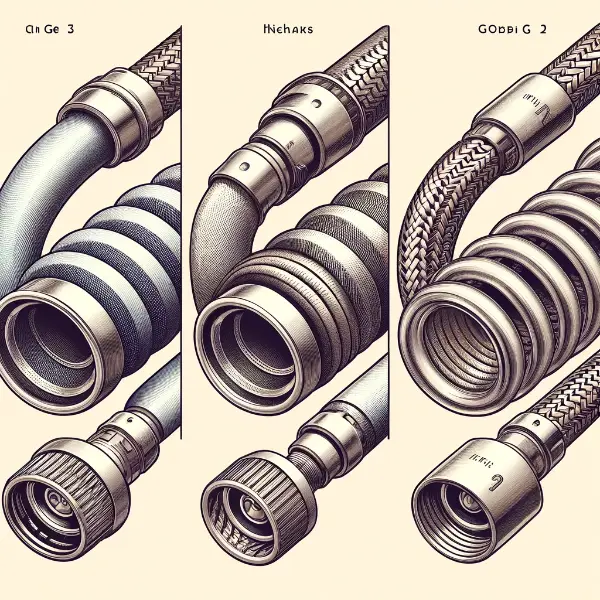
This comprehensive guide will delve into key considerations and tips to help you select the best hose for your needs, specifically focusing on how to choose the right gas hose for your stove.
Understanding Different Types of Gas Hoses
Before making a purchase, it’s essential to know the types of hoses available and their specific uses to ensure you get the right one for your kitchen stove.
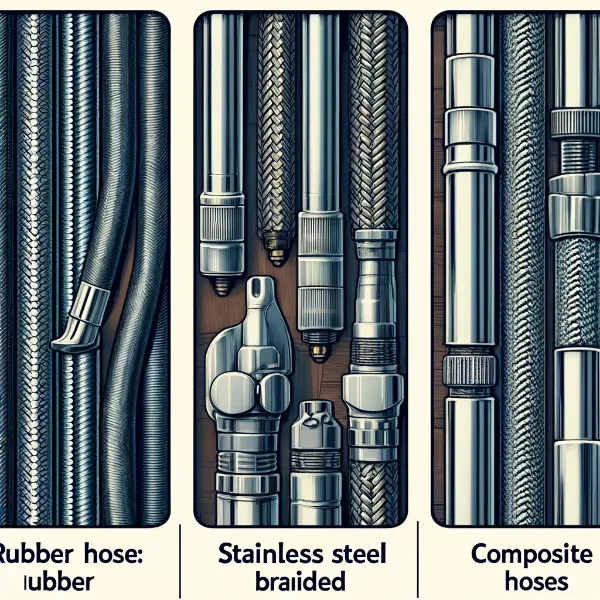
Rubber Hoses
- Pros: Flexible, easy to install, and cost-effective.
- Cons: Less durable, prone to degradation over time, especially when exposed to heat.
Stainless Steel Braided Hoses
- Pros: Extremely durable, resistant to kinks and cracking, and provides excellent protection against rodents.
- Cons: More expensive and offers less flexibility than rubber hoses.
Composite Hoses
- Pros: Lightweight, very flexible, and resistant to corrosion.
- Cons: Typically more costly than rubber hoses and not as widely available.
Key Considerations for Selecting a Gas Hose
When choosing the right gas hose for your stove, there are several important factors to consider to ensure safety and compatibility.

Length
- Avoid Excess Length: Opt for a hose that neatly fits between your gas supply and stove, avoiding any excess that could kink or tangle.
- Measure Accurately: Always measure the distance from your stove to the gas source to purchase a hose of the appropriate length.
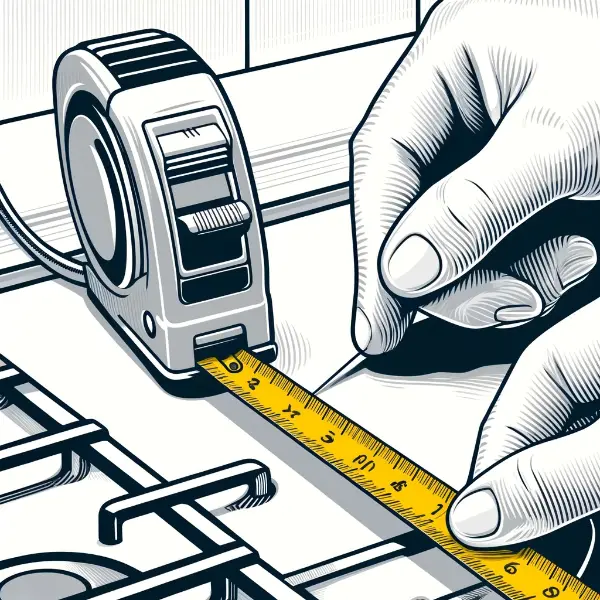
Diameter
- Check Stove Specifications: Consult your stove’s manual for the recommended hose diameter to ensure adequate gas flow.
- Standard Sizes: While most hoses come in standard sizes, confirm that your choice matches your stove’s requirements.
Material
- Consider Your Environment: The choice of material should be influenced by your local climate and environmental conditions. For instance, stainless steel is preferable in humid or coastal areas to prevent rust.
- Assess Durability Needs: In high-usage scenarios, durable materials like stainless steel or composite may offer better long-term value.
Certifications
- Compliance with Safety Standards: Ensure that the hose adheres to national safety standards.
- Manufacturer’s Recommendations: Adhere to any specific guidelines provided by your stove’s manufacturer.
Installation and Maintenance Tips
Proper installation and regular maintenance are crucial for the longevity and safe operation of your gas hose.

Installation Checks
- Leak Testing: Use a soapy water solution on the hose connections to check for leaks. Presence of bubbles indicates a leak.
- Regular Assessments: Check the hose regularly for signs of wear or damage, especially if the stove setup changes.
Professional Installation
- Seek Expertise: If uncertain, it’s safer and often more efficient to have the hose installed by a professional technician.
Maintenance and Safety
Maintaining your gas hose is essential for safety and efficiency.
Regular Inspections
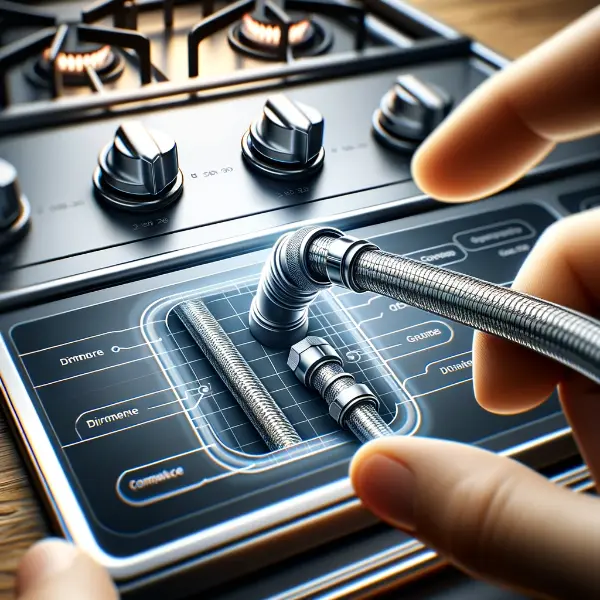
- Visual Checks: Inspect the hose routinely for any signs of wear or damage.
- Prompt Replacement: Replace the hose immediately if any issues are detected to prevent potential hazards.
Safety Precautions
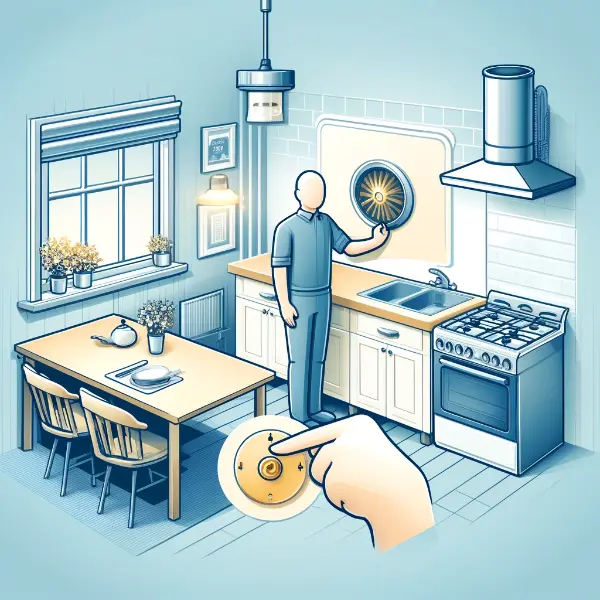
- Ensure Proper Ventilation: Maintain good airflow in the kitchen to prevent gas build-up.
- Know Emergency Protocols: Be familiar with emergency procedures, including how to shut off the gas supply.
How to Choose the right gas hose for Your Stove?
Selecting the right gas hose involves considering several key factors:
- Type of Gas: Ensure the hose is suitable for the type of gas you’re using, whether it’s natural gas or LPG.
- Length and Diameter: Measure the distance from your gas supply to where your stove will be to determine the necessary hose length and check your stove’s manual for the recommended diameter.
- Material: Choose a material that suits your needs—rubber hoses are flexible and cost-effective, while stainless steel hoses offer greater durability.
- Safety Standards: Look for hoses that meet national safety standards to ensure maximum safety and efficiency.
What type of hose is used for gas?
The types of hoses used for gas include:
- Rubber Hoses: These are commonly used for their flexibility and cost-effectiveness but are less durable under high heat and over time.
- Stainless Steel Braided Hoses: These are excellent for their durability, resistance to kinks, and protection against rodents and other physical damages.
- Composite Hoses: Known for their lightweight and high flexibility, they are also corrosion-resistant, making them ideal for various environmental conditions.
What is the standard size of a gas hose?
The standard size of a gas hose typically depends on the appliance and the gas flow requirements. Common diameters for residential gas hoses are 1/2 inch or 3/8 inch. It’s important to consult your appliance’s installation manual or manufacturer’s guidelines to choose the appropriate diameter for optimal performance and safety.
What kind of hose do I need for LPG?
For LPG (Liquefied Petroleum Gas), it’s crucial to select a hose that is specifically designed to handle the properties of LPG:
- Material Suitability: Ensure that the hose material is compatible with LPG, as some materials may degrade if used with this type of gas.
- Safety Certification: Choose a hose that meets the required safety standards for LPG use to avoid any risks of leaks or degradation.
- Durability and Resistance: Consider hoses that offer good resistance to weather, abrasion, and heat, especially in outdoor or demanding environments
Conclusion
Selecting the right gas hose for your kitchen stove involves careful consideration of type, size, material, and adherence to safety standards. It’s crucial for maintaining the safety and efficiency of your cooking environment.
Always prioritize safety and consider professional installation for complex setups. Remember, a well-chosen gas hose not only enhances the functionality of your gas stove but also significantly contributes to the overall safety of your kitchen.
